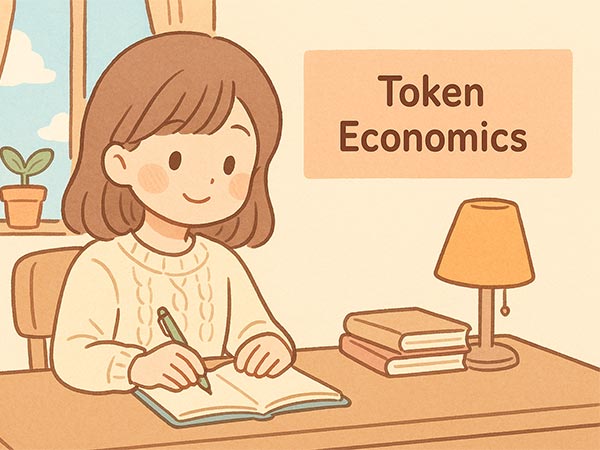Overview of Tokenomics: The Economic Soul of Blockchain Projects

Tokenomics is the economic operating system of a cryptocurrency project. It establishes a value circulation model through rules governing token issuance, distribution, circulation, and consumption. Unlike traditional corporate equity, token economies convert user behaviors—such as trading, staking, and voting—into economic incentives, forming an on-chain “contribution equals reward” production relationship. When Bitcoin combats inflation with a fixed supply of 21 million coins, and Ethereum achieves deflation through its burn mechanism, they are both enacting tokenomics’ core principle: how to create credible scarcity through algorithms.
Core Components of Tokenomics
A sound tokenomic model relies on four foundational pillars:
-
Supply Mechanism is the cornerstone of value. Bitcoin's halving event reduces mining output every four years, mimicking gold's scarcity. In contrast, Solana’s unlimited issuance requires a high burn rate to maintain balance. Ethereum's EIP-1559 upgrade in 2021 introduced a burn mechanism that has destroyed over 4 million ETH—about 1.5 ETH per second.
-
Distribution Logic determines the initial power structure. If the team holds 50% of the tokens (as with early ICP), centralization risks loom large. Uniswap, on the other hand, allocated 60% of tokens to the community, setting a standard for decentralized governance.
-
Utility Scenarios are the oxygen for token survival. BNB evolved from a fee deduction token on Binance into a multi-functional asset used for on-chain gas fees, gaming, and DAO voting. Its value increases as use cases expand.
-
Economic Policies act as the central bank. The DAI stablecoin is pegged to the U.S. dollar via over-collateralization and interest rate adjustments. DeFi protocols like Curve incentivize deposits into liquidity pools with CRV tokens, creating a flywheel of “deposit earns yield — yield buys token — token price sustains yield.”
Analysis of Mainstream Tokenomics Models
Different projects adopt distinct economic models to align with their goals:
-
Deflationary Models like Bitcoin’s “digital gold” approach: capped at 21 million coins, mining rewards halve every four years, driving demand through programmed scarcity. After the 2020 halving, Bitcoin’s annual inflation rate dropped from 3.7% to 1.8%—lower than the real inflation rate of the U.S. dollar.
-
Dual-Token Models rose in GameFi. Axie Infinity used SLP (utility token) to reward gameplay output, while AXS (governance token) captured ecosystem value. But in 2022, SLP plummeted 99% due to oversupply, revealing a design flaw: reward tokens without burn mechanisms inevitably go to zero.
-
Burn Mechanisms have become the new engine of value. After Ethereum’s EIP-1559, 70% of each transaction’s base fee is burned, aligning network usage with token value. At 50 gwei gas fees, Ethereum burns $8,000 worth of ETH per minute.
Fatal Pitfalls in Tokenomics Design
Failed projects reveal three core tokenomic disasters:
-
Uncontrolled Inflation is like a slow poison. STEPN’s GST token, with unlimited emission tied to move-to-earn mining, dropped from $9 to $0.01, diluting user earnings by 99%. The iron rule: output tokens without burn mechanisms will inevitably die.
-
Centralized Token Control erodes trust. Terra (LUNA)’s foundation held 50% of tokens and dumped UST reserves to save the peg—accelerating a $40 billion collapse. On-chain data showed team wallets offloading tokens in the months leading to the crash.
-
Lack of Utility Leads to Naked Speculation. Decentraland (MANA), a once-hyped metaverse project in 2021, had a $2B market cap but fewer than 800 daily active users. Its token became a pure speculation tool.
Practical Token Evaluation Framework
To assess the health of a token economy, dissect these five dimensions:
-
Supply Curve Audit
Check token unlock schedules on CoinMarketCap. If the next year’s unlocked supply exceeds current circulation (e.g., 2023’s APTOS), price pressure will be intense. -
Holder Distribution Scan
Use Etherscan to track top 10 wallet holdings. If they exceed 60% (like early AXS), centralized control is a red flag. -
Utility Stress Test
Ask: If the token price dropped to zero, would the ecosystem collapse? BNB is integral to Binance Chain; meme coins are not. -
Burn Mechanism Efficiency
Calculate the burn-to-issuance ratio. Ethereum’s burn rate in bull markets has reached 300% of its issuance—deflationary. Polygon has a 4% annual issuance but no burn, making it perpetually inflationary. -
Economic Policy Flexibility
Test response to extreme conditions: MakerDAO raised collateral ratios from 150% to 170% during March 2020’s “Black Thursday,” avoiding liquidation cascade.
Case Studies: The Economic Evolution of BNB and ETH
BNB’s “Furnace Revolution”
Binance initially bought back and burned 20% of quarterly profits, destroying 48 million BNB (24% of total supply). In 2023, it shifted to a real-time gas-burning model: every transaction on BNB Chain burns 50% of the gas fee, aligning value capture with network activity.
Ethereum’s Three Economic Transitions
-
2015: Inflationary model with a 4.5% annual issuance
-
2021: EIP-1559 introduced burning; deflation occurs during high activity
-
2023: Shanghai upgrade made ETH a yield-generating asset via staking
Conclusion: The Ultimate Laws of Tokenomics
Tokenomics is not a math exercise in a whitepaper—it’s a real on-chain value system. Successful models always follow these principles:
-
Scarcity must be driven by demand — Bitcoin’s halving works due to storage demand; blindly copying it ends in failure.
-
Tokens must act as the bloodstream of the ecosystem — UNI lost half its market cap from lack of utility, while BNB surged 100x alongside expanding use cases.
-
Power must be distributed among actors — LidoDAO gives 300,000 ETH worth of governance rights to stakers, resisting centralized risk better than team-controlled models.
Tokenomics at its best converts code into tangible value. Ethereum’s burn mechanism (destroying 1.5 ETH/sec) ties token scarcity to actual demand. LUNA’s collapse, by contrast, proves that tokenomics without real utility is doomed.
The rule remains unchanged: on-chain actions create value; artificial manipulation creates bubbles.
-
Sign Up

OKX
OKX is a leading global digital asset trading platform offering spot and derivatives services for cryptocurrencies.
-
Sign Up

Binance
Binance is one of the world's largest cryptocurrency exchanges, offering spot, futures, staking, and a wide range of digital asset services.
-
Sign Up

Bybit
Bybit is a global cryptocurrency exchange specializing in derivatives, spot trading, and crypto-financial products.
-
Sign Up

Gate.io
Gate.io is a leading crypto exchange offering diverse trading options, low fees, and strong security since 2013.
